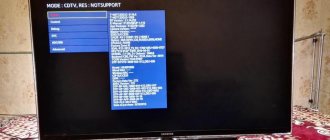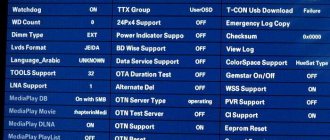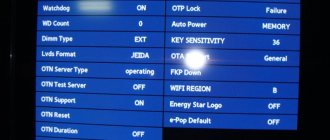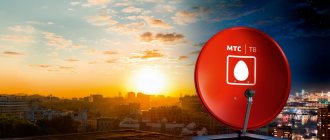So, it is very important to know which tower is closest to your location. Then you will understand which mobile operator will work better, but if you already have a SIM card, then you can determine where exactly the tower of this mobile operator is located.
Thanks to technology, this can now be done quickly. There are many online services that can quickly find the tower of a particular operator.
Nearest Tele2 tower from my location
For Tele2 there are coverage maps for each region, and to find the desired map you need to write exactly Tele2 and your region in the search engine, then you will be shown a map where the 2G, 3G, 4G, LTE towers are written.
In addition, there are Google maps with coverage of all mobile operators, thanks to such a map you can track which of the towers is closest, as well as which mobile operator, which may be useful to you when you choose a new SIM card. There are various applications in Google play and App store that will help you find the right tower. You can also look for a map of base stations on the amateur radio forum, where you can find not only the map, but also the coordinates of the towers, but this takes a very long time to search for.
So, to summarize, we can say that coverage maps can be found both on the official websites of the mobile operator and on Google or other sources, which will help you understand which connection and where will receive better, as well as which mobile operator will work better in your rural area.
Why know where cell towers are located?
This information may be useful in the following life situations:
- When buying a house or cottage in an ecologically clean area, the location of the towers is important to know how good the cellular communications and Internet will be.
- When you are in the mountains or forest, you need to know which way to go in order to catch a signal from the tower and, if necessary, ask for help by phone.
- While searching for missing people. If work is carried out in remote areas with poor communications, portable equipment is often brought in to establish normal communications in the search camp and the surrounding area.
- If you plan to use a wireless router or home signal amplifier, you need to know which way to point it in order to get the best result.
- When using several SIM cards, it is important to know which operator’s tower is closest - this way you can choose a better connection so that the conversation is not interrupted and there is no interference.
The base station map is of great interest to radio amateurs. With its help, they determine how likely there is to be interference in each area. It is also necessary for the operator’s technical staff to know the location of the stations in order to carry out installation and maintenance work on the equipment.
Are 5G towers installed in Russia dangerous?
The 5G communication standard provides for work in several segments of low and high radio frequency bands at once. The centimeter range of 3.4-3.8 gigahertz, standard for urban areas around the world, in Russia is occupied by the military and Roscosmos. They do not yet intend to give their frequencies to businessmen. This circumstance slows down fifth-generation networks in the country, leaving only the inferior millimeter wave range for experiments.
Telecom operators are left with the millimeter band of 26.5-29.5 gigahertz . These frequencies help to achieve enormous Internet speeds, 40 times higher than, for example, standard home Internet (5g speed up to 20 Gbit/s), however, the millimeter range weakly passes through urban areas and therefore in the world's capitals it is used locally only in shopping centers , central city squares, airports and other small spaces in which many users are concentrated at once.
PromRating Information Agency does not have expertise in the field of telecommunications equipment, and can only rely on the positions of recognized authorities in the scientific world.
According to most real scientists, 5G technology is a logical development of 1G, 2G, 3G and 4G networks and does not pose a great danger to animals and humans. At the moment, despite the appearance of thousands of 5G stations in the world, no reliable information about deviations in the health of people interacting with fifth generation networks has been identified.
Let us add that the millimeter range of 26.5-29.5 gigahertz, on which 14 5G test stations are currently operating in Russia, has been used for many years by radar systems of city airports, communication satellites and in cameras for recording violations of the traffic police of the Russian Federation. These frequencies were even used in Soviet hand-held traffic police radar systems. Official science has not recorded any deviations in the health of people interacting with this equipment for a long time. In addition, the higher the frequency, the less penetrating power of the radiation.
The radio waves in question, even in theory, cannot harm a person. In the worst case, we can only talk about heating the body from radio waves by hundredths of a degree, and then only in laboratory experiments at maximum values and minimum distances.
The centimeter range 3.4-3.8 gigahertz as of 2020 in Russia is not available for commercial use in Russia. In other words, such large market players as Beeline, MTS, Megafon and Tele-2 do not have the right to use it. Currently, these frequencies are used by the military and Roscosmos. In the world, it is precisely the range of 3.4-3.8 gigahertz that is universally given over to 5g and this technology is most actively developing in it.
But even here, when discussing the dangers of the hypothetical use of the centimeter range (which has not yet been used and is not allowed in Russia for 5G), we must remember that our home devices are already using these waves: wi-fi routers, microwave ovens, GPS navigators and other equipment familiar to the country.
Map of 5G towers in Moscow 2021
In Moscow, for the first time in Russia, the 5G network moved from the stage of a crude experiment for professionals to the public user stage. On Tverskaya Street, any user of a device with a 5g module can access the Internet at a speed several times higher than in the LTE standard. A review of user experience using the civilian 5G network in Moscow is available here .
On the map of Moscow you can highlight the following locations of 5G stations:
- Tverskaya street
- VDNH
- Territories of the Luzhniki sports complex
- Moscow City Complex
- Sparrow Hills, Belorusskaya metro station.
In none of the listed places have deviations in people’s behavior and health associated with the introduction of 5g technology been identified.
How to find out which operator's tower is nearby?
This may be useful for those who travel to rural areas, which are located at a certain distance from the city and where a city SIM card will not work as efficiently as in the city. Therefore, these people buy a local SIM card, but in order to understand which SIM card will receive better data, you need to understand which tower is closer, namely which operator. To do this, we will analyze a method by which you can find out which tower is located near your location.
Information is available on the Rospotrebnadzor website, namely, there is a resource called “Register of sanitary and epidemiological conclusions on project documentation.”
So let's start from the very beginning and proceed step by step:
- So, to begin with, we go to the page of this registry: https://fp.crc.ru/doc (https://fp.crc.ru/doc/)/ and see a search form there, in this search line we see a line where it says “application text”, there we must enter the locality where you are located. The address must be entered in full, starting with the region, then the district, settlement. The words village, village, settlement do not need to be entered, as this may confuse the search engine.
- Then next to the “show documents” item you need to put o.
- Click on the search button and if everything is filled out correctly, then you should find at least one document, possibly several documents.
- Next, look in the documents, in the project documentation section, for the abbreviation PRTO-BS (PRTO - radio transmitting object, BS - base station).
- If you find this section, then you can see who owns the tower.
- If you don’t find the information in this section, you can find it in the “application” and the first item will be “PRTO owner.” The company that owns the tower will be registered there, and you can find information on the Internet about which company owns a particular mobile operator, but it is known that MTS and Megafon belong to such companies with the same name. Which companies own Tele2, Beeline and Yota can be found on the Internet for which mobile operator.
Map of 5G towers in Russia 2021
According to the PromRating research agency, based on electronic monitoring figures, in 2021 in Russia 14 towers (stations) of the 5G standard are operating in test mode.
5G communication towers in Russia are located in the following cities:
- Moscow - 4 pcs. In test mode and publicly available.
- St. Petersburg – 4 pcs. In test mode
- Kazan – 2 pcs. One in test mode (one more nearby in Innopolis)
- Naberezhnye Chelny – 1 pc. In test mode (on KamAZ)
- Ekaterinburg – 1 pc. In test mode
- Tomsk – 1 pc. In test mode
- Abakan – 1 pc. In test mode.
Thus, 14 5G test stations can be found on the map of the Russian Federation . To understand, in EU countries on average there are about one hundred to one hundred and fifty communication towers of the fifth generation standard per state.
There are several thousand 5G towers in Germany. The most extensive networks of fifth generation communication stations are deployed in the USA and China. There, the number of towers next year could reach a total of 20,000. While there are now about 15,000 5G base stations around the world.
A noticeable contribution to the development of fifth-generation networks was made by the appearance on the market of the Apple iPhone 12 smartphone in October 2021. Apple has added a 5g module to its new product. This innovation will spur investors around the world to implement new communication standards and build new towers. Finally, users have access to a device capable of working in new networks, and once there is a device, there will be networks.
You can read about what the 5g standard is here.
Network Cell Info Lite Features
Controlling a computer via phone - why and how?
This application will demonstrate comprehensive information:
- All signal identifiers;
- Signal strength data;
- Device information.
To visualize the parameters, sensors and graphs are used to visually assess the signal quality.
Among other things, it will be possible to find the location of a cell tower on a map directly in the application.
Benefits of the application
- A large amount of displayed information;
- Built-in map to determine the location of base stations;
- This version of the program is free to use.
Minor drawbacks include the slightly outdated appearance of the program and advertising displayed in the free version.
Operator coverage maps
Base stations of cellular operators create a coverage area presented on the websites of the operators themselves. A computer model is published here without taking into account the features of the area, its relief and the location of artificial landscape elements created by human hands. Therefore, the accuracy of such maps is low - there will certainly be places on them where the presence of a network is indicated when it is actually absent. And vice versa, there are places where there is a zone of reliable reception that is not on the map.
We present to your attention an unofficial service reflecting the quality of coverage throughout Russia.
It displays data received from real users, which allows you to evaluate reception at certain points (including along country roads and federal highways).
The accuracy of coverage maps is low, which must be taken into account when studying them. Maximum accuracy is achieved within populated areas. But already a couple of kilometers away, the signal strength can drop to zero, which is not indicated on the maps. Therefore, when thinking about changing your mobile operator, you need to study the reviews of those who already use the services of the chosen company - interview neighbors, relatives, acquaintances and friends living in the area you are interested in.
Sections with coverage maps are present on the websites of all operators, including virtual ones. The latter include Tinkoff Mobile, Danycom and SberMobile, operating at Tele2 base stations. Their coverage areas coincide 100%, because the companies use the same towers. Some virtual operators work on Beeline towers - a typical example is Spartak Mobile. Therefore, Spartak and Beeline have the same coverage.
MegaFon has a separate map for “Create Wi-Fi” tariffs, which indicates places with a guaranteed minimum speed. But it may not be the most accurate.
Communication Coronavirus and 5g networks fake
The idea of a connection between coronavirus and 5g networks is absurd and does not stand up to criticism. In this case, we are not even talking about a coincidence, since the waves of the spread of coronavirus infection and the implementation maps of 5g towers are very different.
The connection between coronavirus and 5g technology is a misconception that has led to the destruction of dozens of communication nodes that are in no way connected even with fifth-generation networks.
How to find a cell tower
To find out where the tower that provides us with communications is located, you need to know some parameters of the received signal:
- Power (denoted as RSPR);
- Geographic identifier (LAC or TAC);
- Carrier Label (MNC);
- Label of the cell used (CID/SAC/ECI).
The lower the RSPR value, the greater the signal strength. At values greater than 100 dBm, the communication quality becomes frankly poor. This means that the cell tower is either far away or blocked by an obstacle that greatly interferes with the signal (building, trees, hill).
MNC provides insight into which telecom operator owns a particular tower. This allows you to evaluate the quality of communication from different operators. For example, the operator code for MTS is 01, MegaFon is 25. Large mobile operators may have several similar codes at once, for example, for different regions.
Cell tags provide identification of user devices within a cellular network. To put it simply, using these parameters you can approximately determine the location of the mobile device connected to the base station.
This data will help determine the approximate (the error can be up to several kilometers) location of the base station. To do this, you need to enter the signal parameters on a specialized website (for example, xinit.ru). After entering all the necessary data, the site will show the approximate location of the cell tower on the map. After this, you can try to look for it on various map services, or even on panoramas, in order to more accurately point the antenna.
You can find out all this information either using the engineering menu of your mobile phone (each mobile device has its own engineering menu; on some models this is not possible), or using specialized applications, for example, Network Cell Info Lite.
Why do you need to know which tower your mobile phone is connected to?
For a city dweller who spends most of his time in an area with reliable signal reception, information about which base station the mobile phone is connected to may not be important.
Exactly until you decide to order a mobile phone, for example, from China, where the frequencies on which local cellular communications operate may differ from those used in our country. This is where information about base stations comes in handy: you can find out the frequencies and standards on which communications operate in your city, and order a mobile phone that will definitely support all the necessary frequencies.
For residents of towns and villages, as well as regulars at dachas, the issue of connecting to the Internet is acute. Not every village has a stable wired connection, so you have to use 3G/4G modems. And here it is extremely important to know which base station is best to connect to. The most effective will be the one that has a more stable and stronger signal, and also has truly high-speed Internet access (HSPA+, LTE).
Once you know where the cell tower is located, as well as the frequencies it uses, you can use a directional antenna that will work to amplify exactly the right frequencies. This will give a greater effect, and as a result, better stability, higher data reception/transmission speed.
Does 5G harm humans?
According to most scientists, the 5G standard is no more harmful to humans than any other electromagnetic emitting devices.
Electromagnetic pollution, or electromagnetic “smog,” is present in the modern world and appears to have a negative impact on humans. At the same time, one should not exaggerate the impact of this phenomenon on the body and give it an exaggerated role.
The environment contains many harmful agents - chemical pollution, radiation pollution, bacteriological pollution, viral activity, audio pollution, light pollution. Against this background, electromagnetic fields are far from the main evil. Despite the fact that the benefits of introducing modern communication standards are obvious to any sane person.
A fragment of a video from the YouTube channel of physicist Dmitry Pobedinsky
The radiation power of 5g towers does not exceed the power of existing 3g and 4g towers. Moreover, due to the features of the fifth generation cellular communication standard, the energy consumption of a smartphone to be present in the 5g network is reduced. The harm from technology in this regard is even less than from previous standards.
Any information found about the dangers of 5g to nature and humans should be double-checked. Thus, the sensational news about the mass death of birds from testing 5g networks in The Hague turned out to be fake. That is, birds in the city really died en masse, but this happened long before the tests of new cellular communication stations.
The video below contains the most accessible explanation of the security of 5g technology.











